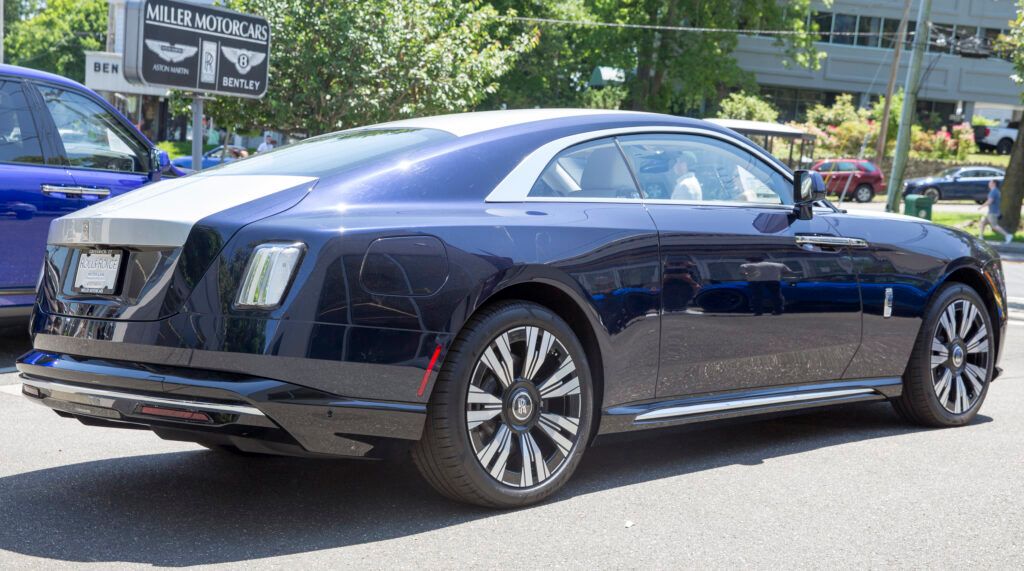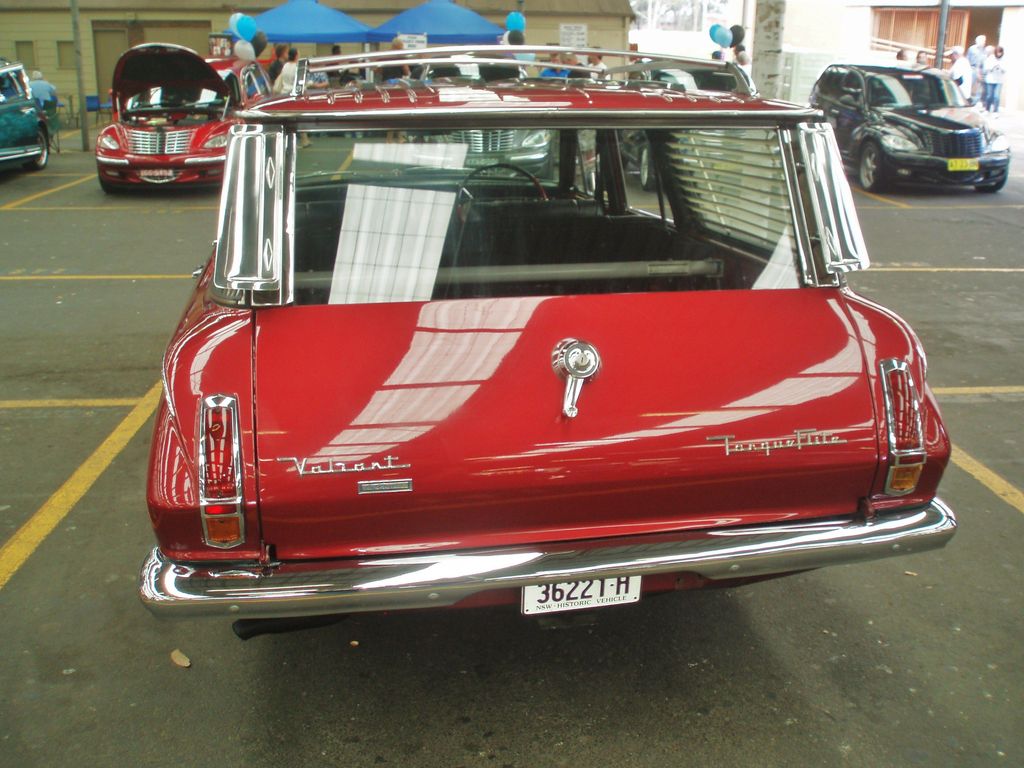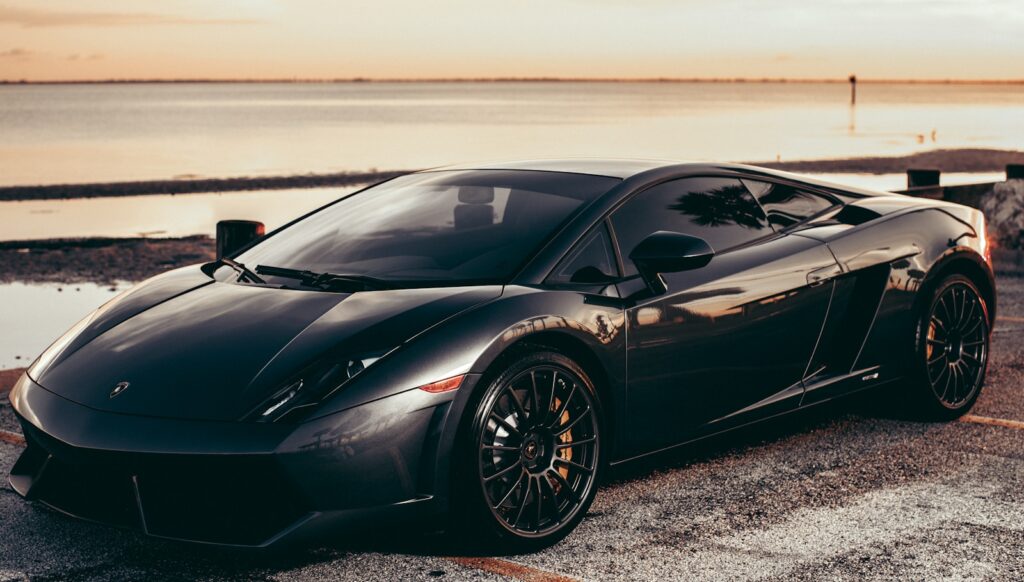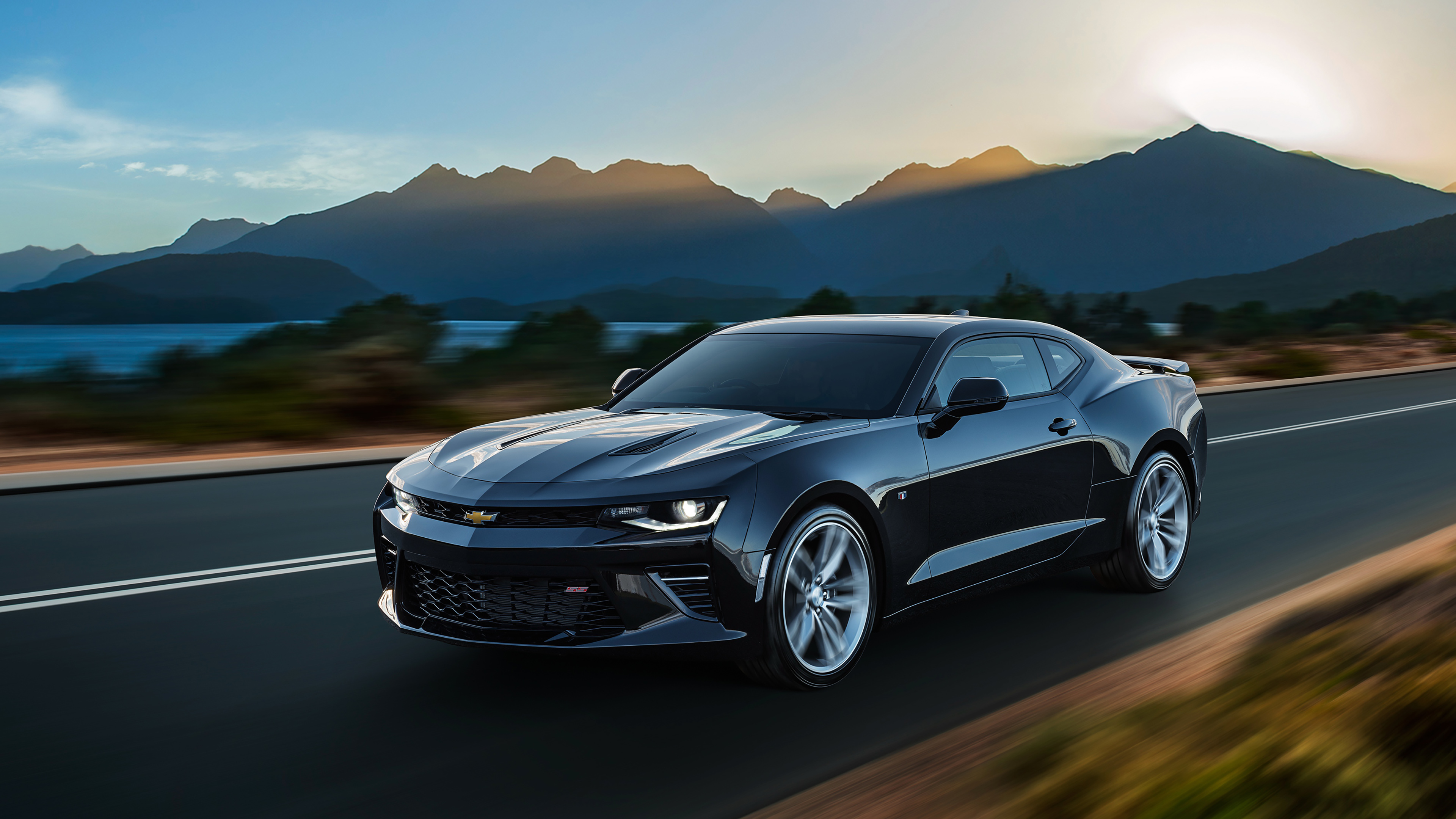
Few names evoke the spirit of American motoring quite like Chevrolet. For over a century, the iconic bowtie logo has graced everything from humble family sedans to world-beating supercars, leaving an indelible mark on global automotive culture. From its founding by famous racecar driver Louis Chevrolet and ousted GM founder William C. Durant on November 3, 1911, Chevrolet has defined what it means to build cars that resonate deeply with enthusiasts and everyday drivers alike. Its journey is a testament to relentless innovation, performance, and an uncanny ability to capture the American imagination.
To celebrate this monumental legacy, we embark on an exhilarating journey through Chevrolet’s most significant achievements. This isn’t just a list of production vehicles; it encompasses racecars, showcars, concept cars, prototypes, and even movie cars. All have contributed to the rich tapestry of Chevy’s hundred-year reign. We’re talking about machines that pushed boundaries, set records, and became cultural touchstones, sparking awe and desire in generations of car lovers, cementing Chevy’s place in history.
Prepare to have your senses ignited as we unveil the first half of our definitive list: 12 of the greatest Chevy models ever. These aren’t just cars; they are legends cast in steel and fiberglass, each telling a compelling story of engineering prowess, groundbreaking design, and a relentless pursuit of speed and style. From the vehicle that kickstarted an entire era to early formidable performance machines, join us as we explore the foundational icons that laid the groundwork for Chevrolet’s enduring greatness.

1. **1955 Bel Air Sport Coupe**The 1955 Bel Air Sport Coupe stands as an undeniable landmark in automotive history, often lauded as the vehicle that truly “brought greatness to Chevrolet.” This model was more than just a car; it was the perfect vessel for Chevy’s revolutionary new small-block V8 engine. Its arrival injected modern style and exhilarating performance into the lineup, transforming Chevrolet’s image from dependable to dynamically desirable.
Its significance cannot be overstated, as the 1955 Bel Air, along with its 150 and 210 trims, formed the iconic “Tri-Five” generation (1955-1957) that sold five million units in just three model years. The Sport Coupe captivated the public with its crisp lines, elegant proportions, and a sense of optimism. It delivered accessible luxury, undeniable style, and unprecedented performance, setting a new benchmark for family cars.
At its heart was the groundbreaking 265-cubic-inch small-block V8, initially making 162 horsepower but showcasing immense tuning potential. This compact, lightweight, and powerful engine was a masterstroke of engineering. It transformed the Corvette into a viable sports car in 1955, but in the Bel Air Sport Coupe, it became a mainstream phenomenon, igniting the performance era. This model heralded a new era for Chevrolet.
Car Model Information: 2023 Acura MDX Base
Name: Chevrolet Bel Air
Caption: 1957 Chevrolet Bel Air convertible
Manufacturer: Chevrolet
Production: 1949–1980
ModelYears: 1950–1981
Class: Full-size
Layout: FR layout
Predecessor: Chevrolet Fleetline,Chevrolet Biscayne
Successor: Chevrolet Impala
Categories: 1950s cars, 1960s cars, 1970s cars, 1980s cars, Articles with short description
Summary: The Chevrolet Bel Air is a full-size car produced by Chevrolet for the 1950–1981 model years. Initially, only the two-door hardtops in the Chevrolet model range were designated with the Bel Air name from 1950 to 1952. With the 1953 model year, the Bel Air name was changed from a designation for a unique body shape to a premium level of trim applied across a number of body styles. The Bel Air continued with various other trim level designations, and it had gone from a mid-level trim car to a budget fleet sedan when U.S. production ceased in 1975. Production continued in Canada, for its home market only, through the 1981 model year.
Get more information about: Chevrolet Bel Air
Buying a high-performing used car >>>
Brand: Chevrolet Model: Bel Air Sport Coupe
Price: $40,888 Mileage: 20,145 mi.
Read more about: America’s Iconic Sports Car: Decoding the Most Problematic Corvette Models in History to Help You Buy Smart
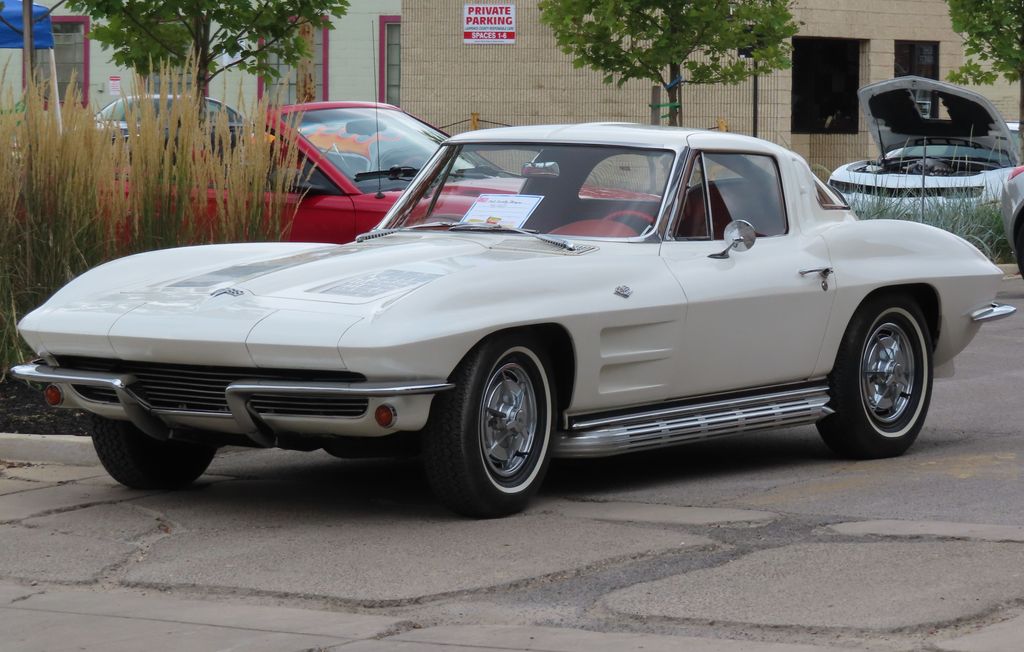
2. **1963 Corvette Coupe**The 1963 Corvette Coupe, the first of the second-generation (C2) Corvettes and renowned as the “first Corvette Sting Ray,” heralded a monumental shift for Chevy’s flagship sports car. This astonishingly beautiful machine set new design and performance standards. Its captivating lines and innovative features, including a distinctive tapering rear deck and a revolutionary split rear window, continue to mesmerize enthusiasts, proving its timeless appeal and impact on automotive design.
Beyond its breathtaking looks, the ’63 Corvette delivered significantly improved handling, thanks to its groundbreaking all-independent suspension system. This advanced setup provided ride sophistication and cornering capability virtually unheard of in American production cars. It elevated the Corvette’s status to a formidable performance machine, truly capable of competing with European sports car giants.
Under the hood, power came from a potent fuel-injected 327-cubic-inch engine, specifically the L84 version, which delivered a robust 360 horsepower. This powerful V8, combined with the car’s lighter weight and advanced suspension, transformed the Corvette into a true high-performance contender. Its legacy as a cohesive package of design, engineering, and performance was thus cemented.
Car Model Information: 2023 Acura MDX Base
Name: Chevrolet Corvette (C2)
Caption: 1963 Chevrolet Corvette Sport Coupe
Manufacturer: Chevrolet
Aka: Chevrolet Corvette Sting Ray
Production: August 1962–July 1967
ModelYears: 1963–1967
Platform: Series 0800 (1962-1964),Series 194 (1965-1967)
Chassis: Body-on-frame
Assembly: St. Louis, Missouri
Predecessor: Chevrolet Corvette (C1)
Successor: Chevrolet Corvette (C3)
Class: Sports car
BodyStyle: Convertible (car),coupé
Layout: Front-engine, rear-wheel-drive layout
Engine: {{cvt,327,cuin,L,1,Chevrolet small-block engine (first- and second-generation)#327,V8 engine
Wheelbase: cvt
Length: cvt
Width: cvt
Height: cvt
Weight: cvt
Transmission: manual transmission,manual transmission,Powerglide
Related: Bill Thomas Cheetah
Designer: Larry Shinoda
Categories: 1960s cars, All articles needing additional references, All articles with specifically marked weasel-worded phrases, All articles with unsourced statements, Articles needing additional references from July 2024
Summary: The Chevrolet Corvette (C2) is the second-generation Corvette sports car, produced by the Chevrolet division of General Motors (GM) for the 1963 through 1967 model years.
Get more information about: Chevrolet Corvette (C2)
Buying a high-performing used car >>>
Brand: Chevrolet Model: Corvette Coupe
Price: $40,888 Mileage: 20,145 mi.
Read more about: America’s Iconic Sports Car: Decoding the Most Problematic Corvette Models in History to Help You Buy Smart
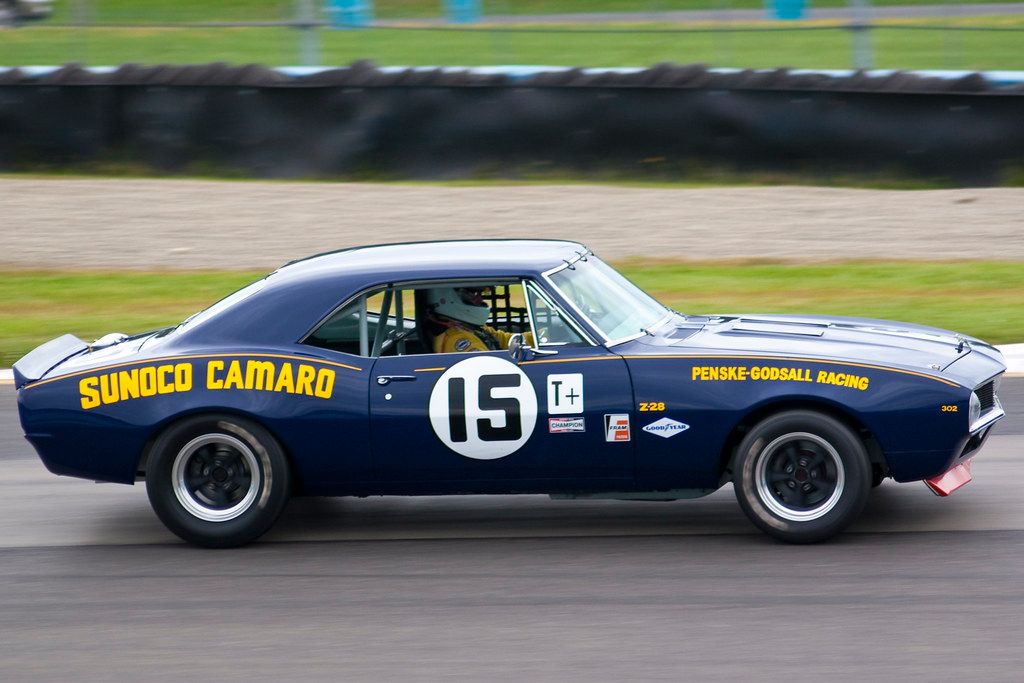
3. **1967 Camaro Z/28**In the fiercely competitive pony car wars of the late 1960s, the 1967 Camaro Z/28 emerged as the epitome of Chevrolet’s answer to the Ford Mustang. This clean, beautiful, and utterly magical machine was meticulously engineered not just for street appeal but for genuine track domination in the SCCA Trans Am racing series. This dual-purpose identity cemented its status as a significant performance car of its era.
The Z/28 was specifically conceived to meet Trans Am regulations, which mandated engines under 305 cubic inches. Chevy cleverly created the legendary DZ302 302-cubic-inch small-block V8, born from a combination of a 327 block and a 283 crankshaft. Officially rated at 290 horsepower, this figure was notoriously conservative; true output was much higher, especially at its screaming 7,000-plus RPM redline.
Beyond the engine, the 1967 Z/28 came equipped with performance upgrades essential for track duty, including a heavy-duty suspension, four-speed manual transmission, and power front disc brakes. Its agile handling, precise steering, and impressive braking made it a joy to drive aggressively, distinguishing it from other muscle cars. This true driver’s car balanced street credibility with race-ready engineering.
Car Model Information: 2025 Honda Civic Sport
Name: Chevrolet Camaro (fourth generation)
Caption: 1993 Chevrolet Camaro Z28
Manufacturer: Chevrolet
Production: November 1992 – August 27, 2002
ModelYears: 1993–2002
Assembly: Sainte-Thérèse, Quebec
Class: Pony car,Muscle car
BodyStyle: ubl
Platform: GM F platform
Related: ubl
Layout: Front-engine, rear-wheel drive layout
Engine: ubl
Transmission: ubl
Wheelbase: cvt
Length: ubl
Width: cvt
Height: ubl
Weight: cvt
Predecessor: Chevrolet Camaro (third generation)
Successor: Chevrolet Camaro (fifth generation)
Designer: ubl
Categories: 2000s cars, All articles needing additional references, All articles with dead external links, All articles with failed verification, Articles needing additional references from July 2020
Summary: The fourth-generation Chevrolet Camaro, colloquially known as the “Catfish Camaro”, is a pony car that was produced by American automobile manufacturer General Motors for the 1993 through 2002 model years. It was introduced on an updated F-body platform but retained the same characteristic since the first-generation’s introduction back in 1967: two doors, coupe or convertible bodystyles, rear-wheel drive, and a choice of 6-cylinder and V8 engines. The Camaro was revised in 1998 with both exterior and engine changes. General Motors discontinued production of the fourth generation of the Camaro due to slow sales, a deteriorated sports coupé market, and plant overcapacity.
Get more information about: Chevrolet Camaro (fourth generation)
Buying a high-performing used car >>>
Brand: Chevrolet Model: Camaro Z/28
Price: $26,923 Mileage: 1,943 mi.
Read more about: Driving the Narrative: The Iconic Vehicles of Stranger Things and Their Unseen Influence
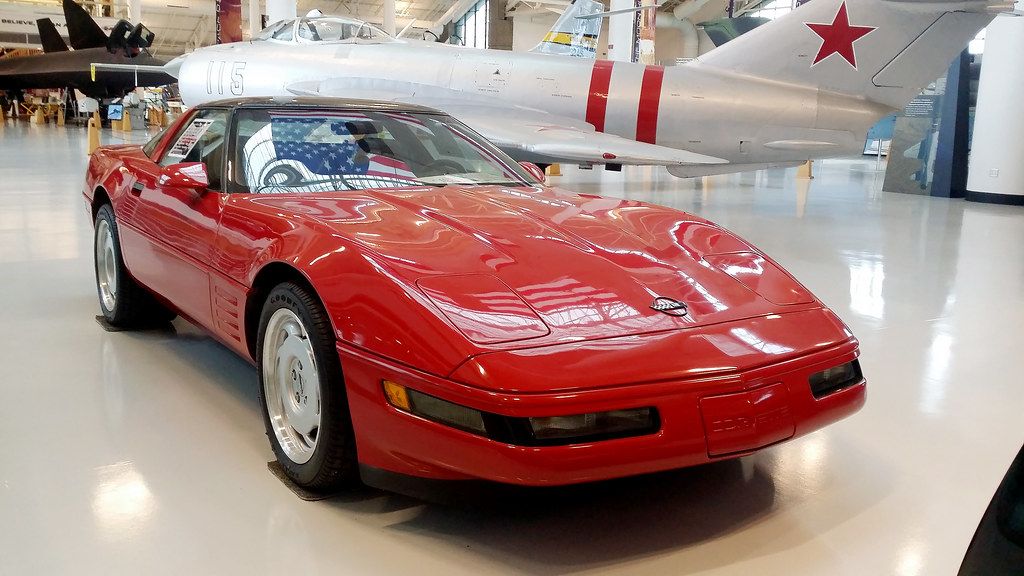
4. **1990 Corvette ZR1**The 1990 Corvette ZR1 represents a bold experiment that profoundly reshaped the performance landscape for America’s sports car. After a period of absence for high-performance Corvettes, the C4 generation saw the revival of the ZR1 badge, signalling a return to uncompromising, world-class performance. This model was a statement, designed to challenge European sports car hierarchy and redefine what a Corvette could be.
At its heart was the groundbreaking Lotus-designed LT5 engine, a truly exotic powerplant for a production American car. This 5.7-liter DOHC 32-valve V8 was a technological marvel, delivering an impressive 375 horsepower. It could propel the car from 0-60 mph in a blistering 4.4 seconds, with a top speed exceeding 180 mph, making it one of the fastest production cars in the world.
The engineering prowess extended beyond the engine. The ZR1 featured significantly widened rear fenders for larger tires, improving grip. Paired exclusively with a custom six-speed manual gearbox, it offered direct driver engagement and control. This combination of a sophisticated engine and advanced chassis truly elevated its driving dynamics. Its impact was profound, setting a new performance bar for all Corvettes to come.
Read more about: Unearthing Hidden Performance: 14 Underrated Sports Cars That Defy Expectations for Today’s Performance Seekers
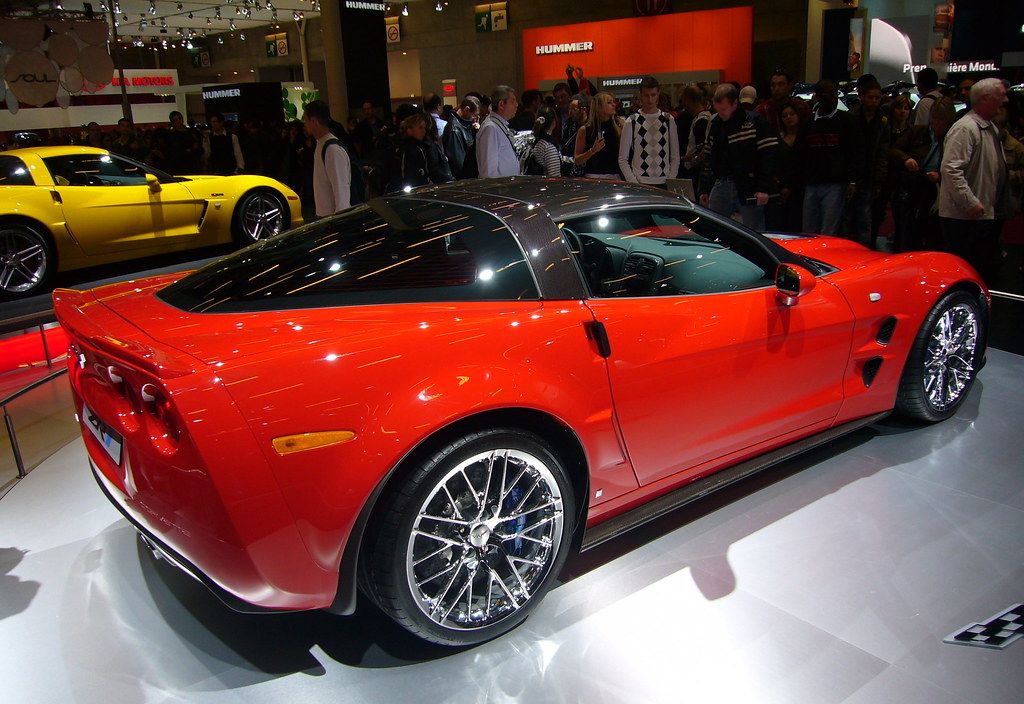
5. **2009 Corvette ZR1**The 2009 Corvette ZR1, internally codenamed “Blue Devil,” marked another significant chapter in the Corvette’s relentless pursuit of ultimate performance. As part of the C6 lineup, this ZR1 redefined what a production Corvette could achieve. With a singular focus on raw power and track-honed dynamics, it firmly established itself as one of the quickest and fastest production Corvettes ever built, pushing the boundaries of American supercar capabilities.
Under its distinctive carbon fiber hood, the 2009 ZR1 housed a monstrous supercharged 6.2-liter LS9 V8 engine. This formidable powerplant cranked out an astounding 638 horsepower and 604 lb-ft of torque, placing it firmly in supercar territory. The supercharger was key to its explosive power delivery, offering instantaneous throttle response and relentless acceleration, enabling the ZR1 to achieve a top speed of over 200 mph.
Beyond sheer horsepower, the ZR1 was engineered for precision and control. It featured advanced magnetic selective ride control, carbon-ceramic brakes (a first for a production Corvette), and extensive use of lightweight materials like carbon fiber. These elements were crucial in managing its immense power and providing exceptional handling. Its capabilities were famously demonstrated at the Nurburgring Nordschleife, posting an impressive 7:19 minute lap time.
Read more about: Unearthing Hidden Performance: 14 Underrated Sports Cars That Defy Expectations for Today’s Performance Seekers

6. **2012 Chevy Camaro ZL1**The 2012 Chevy Camaro ZL1 stormed onto the scene as an undeniable testament to Chevrolet’s commitment to resurrecting its muscle car legend with modern, world-class performance credentials. This wasn’t merely a beefed-up Camaro; it was a meticulously engineered machine designed to dominate both the drag strip and challenging road courses, blending raw horsepower with sophisticated handling capabilities. Its arrival signaled a serious contender in the high-performance coupe segment.
At the heart of the 2012 ZL1 was a supercharged 6.2-liter LSA V8 engine, derived from the same lineage as the Corvette ZR1’s LS9. This powerhouse delivered a staggering 580 horsepower and 556 lb-ft of torque, making it, by far, the fastest Camaro ever produced at the time. This immense power translated into breathtaking acceleration, with 0-60 mph times dropping into the low 4-second range and quarter-mile runs consistently in the low 12s.
However, what truly distinguished the 2012 ZL1 was its Nurburgring-tuned suspension. This comprehensive overhaul included Magnetic Ride Control, performance traction management, and a thoroughly revised chassis, all calibrated on the world’s most demanding race track. The result was a Camaro that wasn’t just fast in a straight line but also exceptionally capable in corners, earning it the reputation as the best-handling Camaro ever.
Having explored the foundational legends and the rise of iconic performance machines in Chevrolet’s illustrious history, we now delve into the brand’s unwavering commitment to high-performance and relentless innovation. This second half of our definitive list showcases machines that continued to push boundaries, from race-bred champions to vehicles demonstrating cutting-edge technology and modern utility icons, each shaping Chevy’s enduring legacy through subsequent decades. These models embody the continuous evolution of what a Chevrolet can be, reflecting a spirit of competition and forward-thinking engineering that has thrilled enthusiasts for generations.
Read more about: Beyond the Legends: Unearthing 12 Special-Edition Muscle Cars That Demand Recognition

7. **1969 Camaro ZL-1**The 1969 Camaro ZL-1 represents the pinnacle of Chevrolet’s factory-backed racing efforts, a true legend born from a Central Office Production Order (COPO) program. Only 69 units were ever built under COPO 9560, making it one of the rarest and most coveted Camaros of all time. This wasn’t just a special edition; it was a no-compromise, race-ready machine designed to dominate on the track, a testament to Chevy’s fierce competitive spirit in the late 1960s.
At the heart of the ZL-1 was an engineering marvel: an all-aluminum 427 big-block V8 engine. What made this powerplant truly revolutionary was its construction, which allowed it to weigh less than a conventional small-block V8, significantly improving the car’s power-to-weight ratio and handling dynamics. Officially rated at a conservative 430 horsepower, its true output was undoubtedly much higher, capable of delivering explosive acceleration that terrorized competitors.
These limited-production Camaros were not built for the faint of heart; they were purpose-built for racing, translating directly into their legendary status among collectors. Owning a 1969 Camaro ZL-1 today is a privilege reserved for a select few, with these vehicles frequently commanding prices well over $500,000, solidifying their place as the ultimate collector Camaro. Their raw power and exclusivity make them a highlight in the annals of muscle car history.
Car Model Information: 2023 Acura MDX Base
Name: Chevrolet Camaro (sixth generation)
Caption: 2019 Chevrolet Camaro 2SS
Manufacturer: Chevrolet
Production: October 2015 – December 2023
ModelYears: Japan
Assembly: Lansing, Michigan
Designer: [object Object]
Class: Pony car,Muscle car
BodyStyle: coupé,convertible
Platform: GM Alpha platform
Related: Cadillac ATS,Cadillac CTS,Cadillac CT4,Cadillac CT5
Layout: Front-engine, rear-wheel drive layout
Engine: GM Ecotec engine#LTG,GM High Feature engine#LGX,General Motors LS-based small-block engine#LT1,General Motors LS-based small-block engine#LT4
Transmission: Tremec TR-3160 transmission,Tremec TR-6060 transmission,GM 8L transmission#8L45,GM 8L transmission#8L90,Ford-GM 10-speed automatic transmission,Ford-GM 10-speed automatic transmission,Ford-GM 10-speed automatic transmission
Wheelbase: 110.7 in
Abbr: on (SS; automatic)
Length: {{convert,188.3,in,mm,0,abbr=on
Width: 74.7 in
Height: {{convert,52.0,in,mm,0,abbr=on
Weight: {{convert,3339,lb,kg,abbr=on
Predecessor: Chevrolet Camaro (fifth generation)
Categories: All articles with unsourced statements, Articles with Korean-language sources (ko), Articles with short description, Articles with unsourced statements from February 2025, Articles with unsourced statements from June 2023
Summary: The sixth-generation Chevrolet Camaro is an American pony car. Produced by automobile manufacturer Chevrolet, it was first introduced to the public on May 16, 2015. Sales started in 2015 for the 2016 model year. The Camaro now utilizes the GM Alpha platform shared with the Cadillac ATS and CTS and features MacPherson struts in front, rather than the former multi-link setup. General Motors claims that 70 percent of architectural components in the new Camaro are unique to the car.
The sixth generation of Camaro saw production return to the United States as the fourth and fifth-generation models had been assembled in Canada.
Like its predecessor, the sixth generation of the Camaro is available in coupé and convertible body styles. Compared to the previous generation, it is 2.3 in (58 mm) shorter, 0.8 in (20 mm) narrower and 1.1 in (28 mm) shorter in height. With similar equipment and engine, it is also more than 200 lb (91 kg) lighter.
Production of the sixth-generation Camaro ended on December 14, 2023.
Get more information about: Chevrolet Camaro (sixth generation)
Buying a high-performing used car >>>
Brand: Chevrolet Model: Camaro ZL-1
Price: $40,888 Mileage: 20,145 mi.
Read more about: Revving Up History: Unearthing the Forgotten Engines That Forged American Muscle Legends
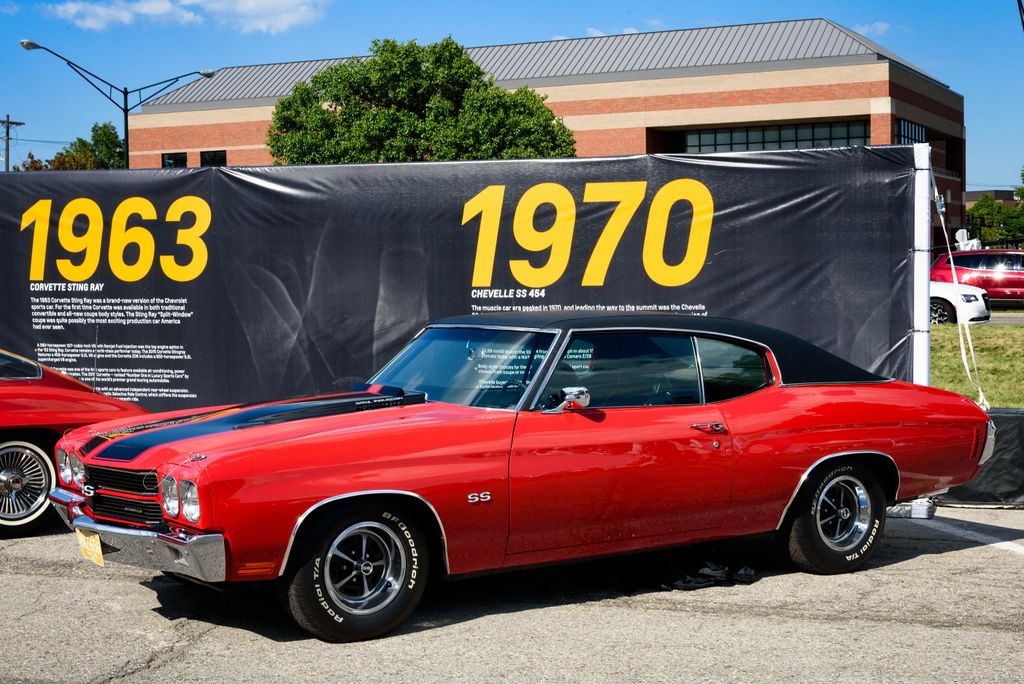
8. **1970 Chevelle SS 454 LS6**When we talk about the absolute kings of the muscle-bound era, the 1970 Chevelle SS 454 LS6 undeniably stands at the very top. This machine was the epitome of brute force and American horsepower, a car that perfectly captured the spirit of an era when bigger truly meant better in the performance car world. It was a statement of power, both on the street and on the drag strip, establishing itself as one of the most powerful Chevelles ever created.
The heart of this beast was the legendary 454-cubic-inch LS6 big-block V8. While officially rated at a staggering 450 horsepower, it was widely acknowledged to be significantly underrated, a common practice of the time to appease insurance companies. This immense power was delivered through a single 800-cfm Holley four-barrel carburetor and an aluminum manifold, showcasing serious, competition-grade hardware right from the factory floor.
Chevrolet produced 4,475 LS6 Chevelles, a substantial number for such a potent and specialized model, indicating its widespread appeal among performance enthusiasts. The attention to detail even extended to optional features like hood lock pins and distinctive deck stripes, allowing owners to personalize their ultimate muscle car. The SS 454 LS6 remains a timeless classic, a testament to an era of unbridled horsepower and raw, visceral driving experiences.
Car Model Information: 2023 Acura MDX Base
Name: Chevrolet Chevelle
Caption: 1970 Chevrolet Chevelle SS 396 Sport Coupe
Manufacturer: Chevrolet
Production: 1963–1977
ModelYears: 1964–1977
Class: Mid-size
Platform: GM A platform (RWD)
Layout: FR layout
Successor: Chevrolet Malibu
Categories: 1970s cars, All articles needing additional references, All articles that may contain original research, All articles with specifically marked weasel-worded phrases, All articles with unsourced statements
Summary: The Chevrolet Chevelle is a mid-sized automobile that was produced by the Chevrolet division of General Motors (GM) in three generations for the 1964 to 1977 model years. Part of the GM A-body platform, the Chevelle was one of Chevrolet’s most successful nameplates. Body styles included coupes, sedans, convertibles, and station wagons. The “Super Sport” versions were produced through the 1973 model year and Lagunas from 1973 through to 1976.
After a four-year absence, the El Camino was reintroduced as part of the new Chevelle lineup in 1964.
From 1964 to 1969, GM of Canada sold a modified version of the Chevelle that included a Pontiac-style grille, and a LeMans instrument panel, marketed as the Beaumont.
The Malibu was the top-of-the-line model to 1972, and completely replaced the Chevelle nameplate starting with the redesigned, and downsized 1978 model year.
Get more information about: Chevrolet Chevelle
Buying a high-performing used car >>>
Brand: Chevrolet Model: Chevelle SS 454 LS6
Price: $40,888 Mileage: 20,145 mi.
Read more about: The Unspoken Truth: What Gearheads *Really* Think When You Roll Up in These 14 Legendary Vintage Trucks
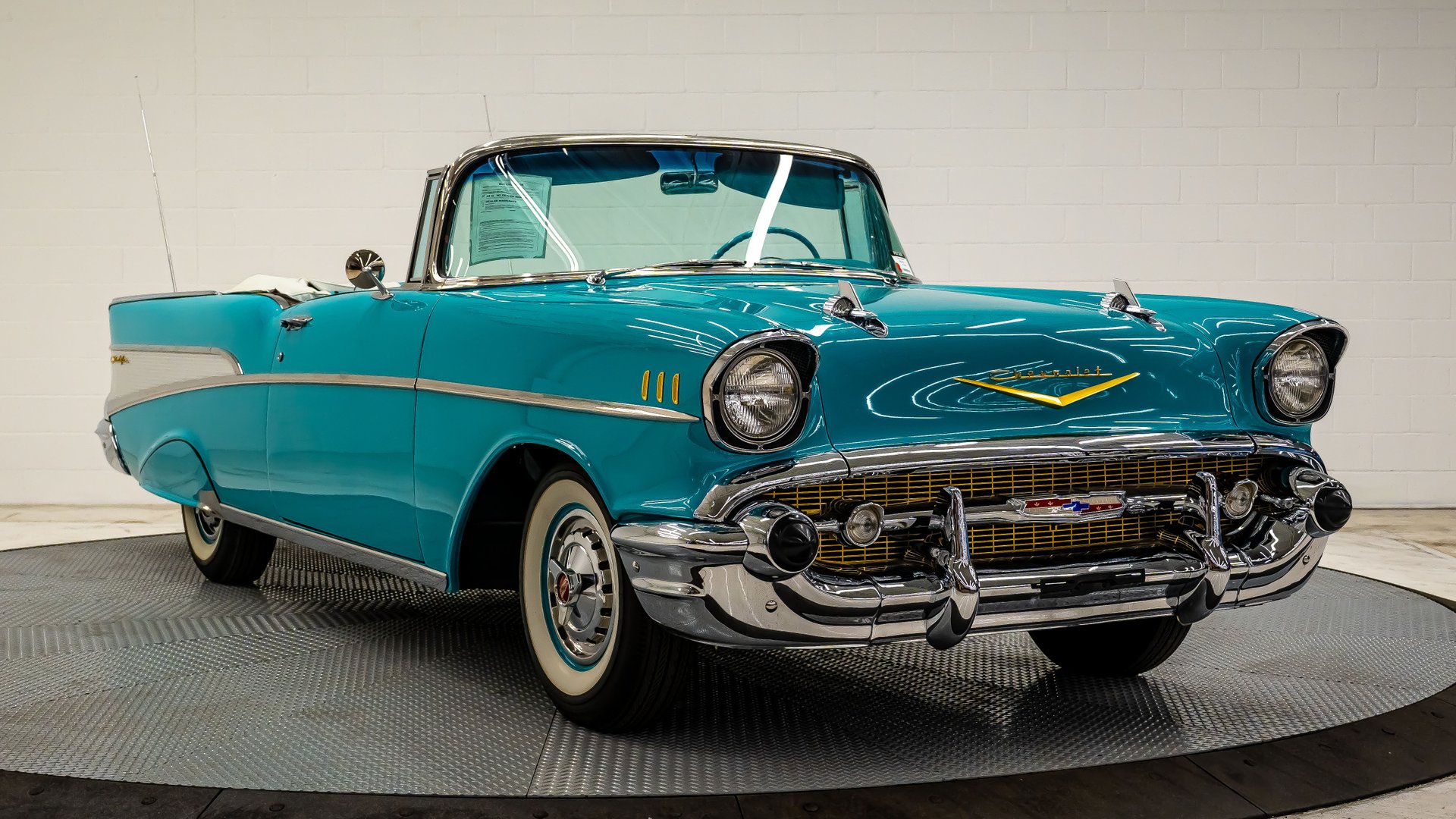
9. **1957 Bel Air Convertible**While the 1955 Bel Air Sport Coupe has already been celebrated for bringing a new era of style and performance to Chevrolet, its 1957 convertible counterpart holds its own as a truly flamboyant and iconic vehicle. As part of the revered “Tri-Five” generation, which sold an astonishing five million units from 1955-1957, the ’57 Bel Air Convertible transcended mere transportation, becoming a cherished symbol of 1950s American optimism and design prowess.
The 1957 Bel Air Convertible, a design icon of the 1950s, offered a compelling blend of elegance and performance. It epitomized the accessible luxury Chevrolet provided to the masses, a formula that resonated deeply with the burgeoning post-war American dream. Its sweeping lines, chrome accents, and vibrant color options made it a head-turner, perfectly embodying the era’s exuberant car culture and cementing its place in popular imagination.
What truly made the 1957 Bel Air Convertible a formidable machine, beyond its undeniable style, was the availability of the fuel-injected 283-cubic-inch small-block V8. This advanced Rochester mechanical fuel injection system, delivering a robust 283 horsepower, transformed the stylish convertible into a genuine performance contender. It offered a level of precision and power delivery that was cutting-edge for the mid-50s, elevating the driving experience significantly.
This innovative fuel-injection technology was also prominently featured in the high-performance Corvettes of the era, underscoring its engineering significance across Chevrolet’s performance lineup. The ability to pair such advanced power with the Bel Air’s accessible luxury solidified its status, not just as a beautiful car, but as a technological statement that delivered serious performance, laying groundwork for future Chevy icons.
Car Model Information: 2023 Acura MDX Base
Name: Chevrolet Bel Air
Caption: 1957 Chevrolet Bel Air convertible
Manufacturer: Chevrolet
Production: 1949–1980
ModelYears: 1950–1981
Class: Full-size
Layout: FR layout
Predecessor: Chevrolet Fleetline,Chevrolet Biscayne
Successor: Chevrolet Impala
Categories: 1950s cars, 1960s cars, 1970s cars, 1980s cars, Articles with short description
Summary: The Chevrolet Bel Air is a full-size car produced by Chevrolet for the 1950–1981 model years. Initially, only the two-door hardtops in the Chevrolet model range were designated with the Bel Air name from 1950 to 1952. With the 1953 model year, the Bel Air name was changed from a designation for a unique body shape to a premium level of trim applied across a number of body styles. The Bel Air continued with various other trim level designations, and it had gone from a mid-level trim car to a budget fleet sedan when U.S. production ceased in 1975. Production continued in Canada, for its home market only, through the 1981 model year.
Get more information about: Chevrolet Bel Air
Buying a high-performing used car >>>
Brand: Chevrolet Model: Bel Air
Price: $40,888 Mileage: 20,145 mi.
Read more about: America’s Iconic Sports Car: Decoding the Most Problematic Corvette Models in History to Help You Buy Smart
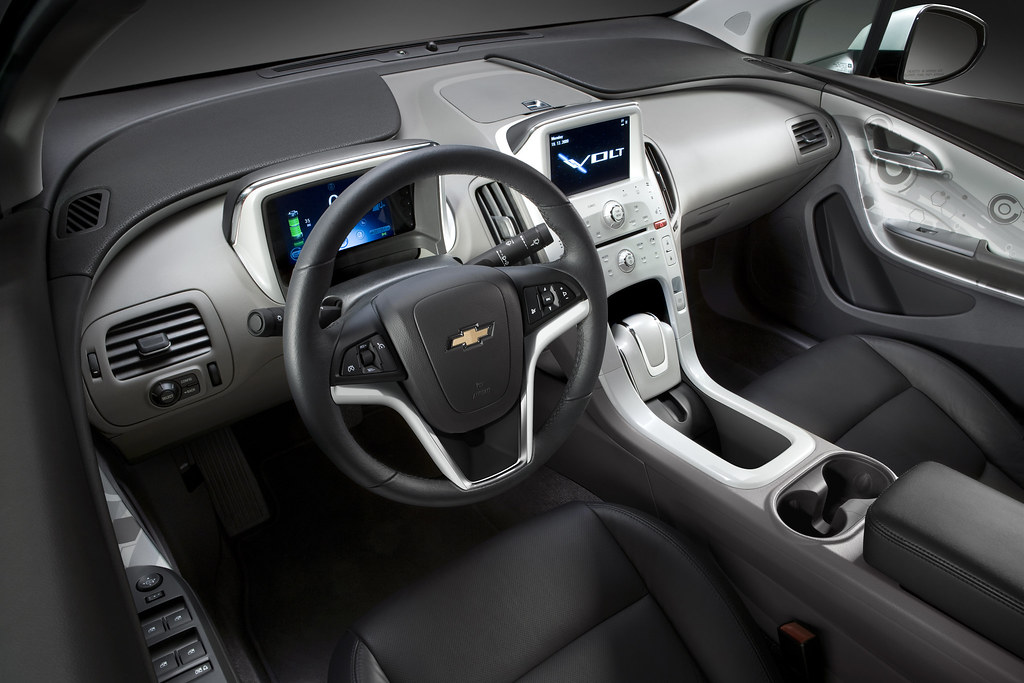
10. **2011 Volt**Shifting gears dramatically from pure horsepower, the 2011 Volt carved out its place as perhaps the most innovative car ever built by GM. This groundbreaking extended-range electric vehicle represented a monumental leap forward in automotive technology, demonstrating Chevrolet’s foresight and commitment to leading the industry into a new century. It was a bold statement, proving that performance could also mean efficiency and sustainability.
The Volt wasn’t just a concept; it was a practical solution designed to alleviate range anxiety associated with early electric vehicles. It skillfully combined an all-electric driving range with a small gasoline engine acting as a generator, ensuring drivers could travel far beyond the battery’s limits without needing to charge. This innovative approach positioned it as a technological leader, providing a unique bridge between traditional internal combustion and pure electric power.
Upon its debut, the 2011 Volt quickly began stealing customers from established hybrid and electric competitors like Toyota and Nissan. Its success was a clear indication that General Motors possessed the engineering prowess not only to navigate the uncertain waters of the 21st-century automotive landscape but also to redefine consumer expectations for environmentally conscious vehicles. It proved that cutting-edge technology could be both accessible and desirable.
The Volt’s introduction also played a crucial role in showcasing GM’s capability to meet increasingly daunting near-term fuel economy standards set by governments worldwide, demonstrating a path forward for the entire industry. It fundamentally altered perceptions of GM’s ability to innovate in green technology, solidifying the Volt’s legacy as a true trailblazer and a key model destined to technologically lead Chevy through its second century.
Car Model Information: 2017 Chevrolet Volt LT
Name: Chevrolet Volt
Caption: 2012 Chevrolet Volt
Manufacturer: General Motors
Production: November 2010 – February 2019
ModelYears: 2011–2019
Class: Compact car
BodyStyle: liftback
Layout: Front-engine, front-wheel drive
Designer: Jelani Aliyu
Categories: All Wikipedia articles written in American English, All articles containing potentially dated statements, All articles with dead external links, Articles containing potentially dated statements from August 2016, Articles containing potentially dated statements from February 2014
Summary: The Chevrolet Volt is an electric vehicle car that was manufactured by General Motors, and also marketed in rebadged variants as the Holden Volt in Australia and New Zealand and the Buick Velite 5 in China, and with a different fascia as the Vauxhall Ampera in the United Kingdom and as the Opel Ampera in the remainder of Europe. Volt production ended in February 2019. While similar in some ways to hybrid vehicles, the Chevy Volt is an electric car with an onboard gasoline generator.
Sales of the Volt began in the United States in mid-December 2010, followed by some European countries and other international markets in 2011. Global combined Volt/Ampera-family sales totaled about 177,000 units by the end of October 2018. The U.S. was the leading market, with 157,054 Volts delivered through the end of 2019, followed by Canada with 16,653 Volts sold through September 2018. Just over 10,000 Opel/Vauxhall Ampera cars had been sold in Europe as of June 2016. Until December 2018, the Volt/Ampera family of vehicles was the world’s bestselling plug-in hybrid vehicle. When it was discontinued, the Chevrolet Volt was still listed as the top-selling plug-in hybrid in the American market.
The Volt operates as a pure battery electric vehicle until its battery capacity drops to a predetermined threshold from full charge. From there, its internal combustion engine powers an electric generator to extend the vehicle’s range as needed. While running on gasoline at high speeds the engine may be mechanically linked (by a clutch) to the car’s gearbox, improving efficiency by 10% to 15%. The Volt’s regenerative braking also contributes to the on-board electricity generation. Under the United States Environmental Protection Agency (EPA) cycle, the 2013–15 model year Volt all-electric range is 38 mi (61 km), with a combined electric mode/gasoline-only rating of 62 mpg‑US (3.8 L/100 km; 74 mpg‑imp) equivalent (MPG equivalent).
The second-generation Volt’s improved battery system and drivetrain increased the all-electric range to 53 miles (85 km), its EPA-rated fuel economy in charge-sustaining mode to 42 mpg‑US (5.6 L/100 km; 50 mpg‑imp), and the combined city/highway fuel economy in all-electric mode to 106 MPG-e, up from 98 MPG-e. Deliveries to retail customers in the U.S. and Canada began in October 2015 as a 2016 model year.
The Volt won several awards, including the 2009 Green Car Vision Award, 2011 Green Car of the Year, 2011 North American Car of the Year, 2011 World Green Car, 2011 SAE Best engineered car, 2012 European Car of the Year, and 2016 Green Car of the Year.
Get more information about: Chevrolet Volt
Buying a high-performing used car >>>
Brand: Chevrolet Model: Volt
Price: $8,334 Mileage: 123,493 mi.
Read more about: Beyond the Mic: Inside Drake’s Toronto Mansion and the 1 Billion-Dollar Corporation Securing His Dominance
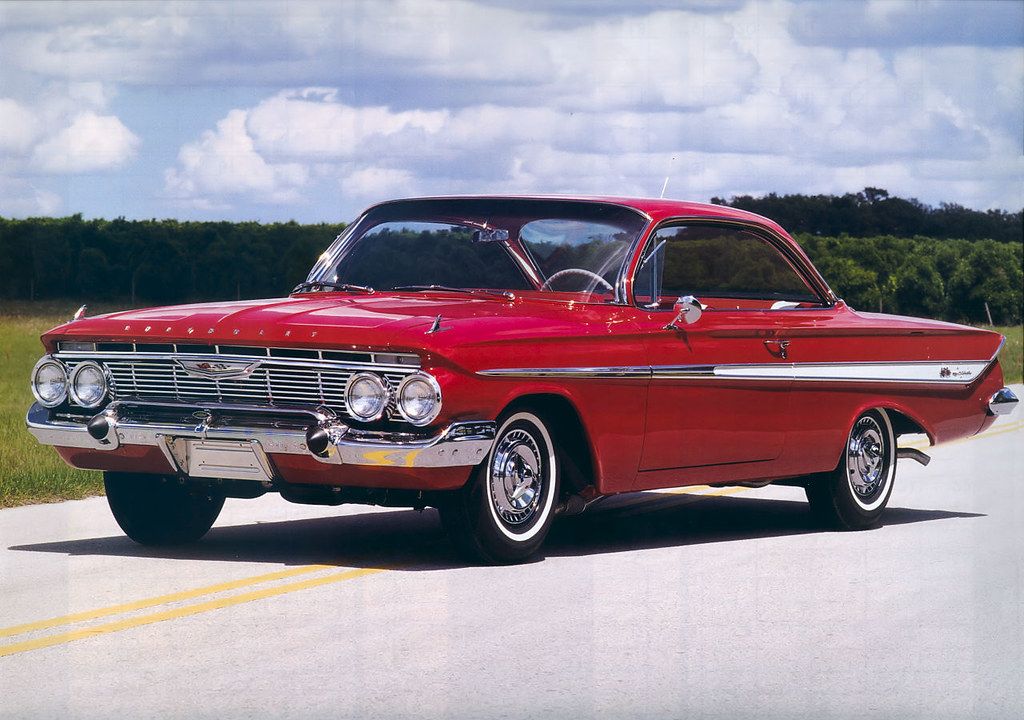
11. **1961 Impala SS**Marking a pivotal moment in Chevrolet’s performance history, the 1961 Impala SS holds the distinction of being the very first Super Sport model. This was more than just a trim package; it signaled Chevrolet’s serious entry into the burgeoning factory performance market, providing buyers with a taste of track-ready excitement in a full-size package. Its introduction set a precedent for high-performance editions across the Chevy lineup.
Visually, the 1961 Impala SS was a stunning presence, particularly in its iconic “bubble top” coupe form. This distinctive roofline contributed to its status as one of the best-looking big coupes ever produced, blending elegant proportions with a hint of underlying power. It exuded a sophisticated sportiness that appealed to a wide array of drivers, establishing a new benchmark for stylish performance.
Underneath its elegant sheet metal, the 1961 Impala SS could be equipped with serious firepower. Beginning in January 1961, the formidable 360-horsepower 409 V8 engine became an available option, transforming the already attractive Impala into a true pavement-shredder. This 409-equipped “bubble top” was a consistent winner in NHRA stock classes, confirming its potent performance capabilities and cementing its legendary status in drag racing folklore.
Car Model Information: 2023 Acura MDX Base
Name: Chevrolet Impala
Caption: Fourth-generation model (1967)
Manufacturer: Chevrolet
Production: 1957–1985,1994–1996,1999–2020
ModelYears: 1958–1985,1994–1996,2000–2020
Predecessor: Chevrolet Bel Air,Chevrolet Lumina#Second generation (1995–2001)
Successor: Chevrolet SS,Chevrolet Caprice
Platform: GM B platform,GM W platform,GM W platform (GMX211) (2005–2013),GM Epsilon platform#Epsilon II
Class: Full-size car,Mid-size car
Layout: Front-engine, rear-wheel-drive layout,Front-engine, front-wheel-drive layout
Categories: 1960s cars, 1970s cars, 1980s cars, 1990s cars, 2000s cars
Summary: The Chevrolet Impala () is a full-size car that was built by Chevrolet for model years 1958 to 1985, 1994 to 1996, and 2000 to 2020. The Impala was Chevrolet’s popular flagship passenger car and was among the better-selling American-made automobiles in the United States.
For its debut in 1958, the Impala was distinguished from other models by its symmetrical triple taillights. The Chevrolet Caprice was introduced as a top-line Impala Sport Sedan for model year 1965, later becoming a separate series positioned above the Impala in 1966, which, in turn, remained above the Chevrolet Bel Air and the Chevrolet Biscayne. The Impala continued as Chevrolet’s most popular full-sized model through the mid-1980s. Between 1994 and 1996, the Impala was revised as a 5.7-liter V8–powered version of the Chevrolet Caprice Classic sedan.
In 2000, the Impala was reintroduced again as a mainstream front-wheel drive car. In February 2014, the 2014 Impala ranked No. 1 among Affordable Large Cars in U.S. News & World Report’s rankings. When the 10th generation of the Impala was introduced for the 2014 model year, the 9th generation was rebadged as the Impala Limited and sold only to fleet customers through 2016. During that time, both versions were sold in the United States and Canada. The 10th-generation Impala was also sold in the Middle East and South Korea.
Get more information about: Chevrolet Impala
Buying a high-performing used car >>>
Brand: Chevrolet Model: Impala SS
Price: $40,888 Mileage: 20,145 mi.
Read more about: Legends Lost: Revisiting the Classic American Cars of the ’50s and ’60s That Defined an Era and Vanished

12. **1986 Monte Carlo SS Aerodeck**As the final entry in our top 12, the 1986 Monte Carlo SS Aerodeck stands as a testament to Chevrolet’s adaptability and commitment to winning, particularly in the cutthroat world of NASCAR. This model wasn’t just a passenger car; it was a direct response to aerodynamic challenges on the racetrack, specifically designed to homologate a special body for use in the highly competitive Winston Cup series.
The most distinctive feature of the Aerodeck was its large, sloping piece of glass at the rear, a design element engineered specifically to improve aerodynamics at high speeds. This modification was crucial for maintaining Chevrolet’s competitive edge after Ford introduced its slippery ’83 Thunderbird, which had given the Blue Oval teams a significant advantage. The Aerodeck was Chevrolet’s strategic move to reclaim dominance.
While conceived for racing, the Aerodeck also made its way to the streets, with 200 production cars built in 1986 and 6,052 in 1987. More importantly, its race-bred design paid dividends where it mattered most: on the track. Legendary driver Dale Earnhardt piloted the Aerodeck to Winston Cup championships in both 1986 and 1987. Furthermore, his first iconic black, Goodwrench-sponsored car in 1988 was an Aerodeck, forever linking this aerodynamic marvel with one of NASCAR’s greatest.
The competitive landscape of NASCAR during this era demanded constant innovation, and the Monte Carlo SS Aerodeck exemplified this perfectly. Its success on the track directly influenced subsequent race car designs and homologation rules, showcasing how a specific aerodynamic advantage could lead to championship glory. This blend of road-legal production and track-proven victory truly solidified the Aerodeck’s significance in automotive and racing history.
Car Model Information: 2023 Acura MDX Base
Buying a high-performing used car >>>
Brand: Chevrolet Model: Monte Carlo SS Aerodeck
Price: $40,888 Mileage: 20,145 mi.
From the asphalt-shredding muscle of the ZL-1 and Chevelle LS6 to the trend-setting innovation of the Volt and the championship-winning aerodynamics of the Monte Carlo SS Aerodeck, Chevrolet’s journey is a vibrant tapestry woven with threads of engineering brilliance, daring design, and an unyielding passion for automotive excellence. These machines are more than just metal and rubber; they are milestones that have not only defined their respective eras but have also profoundly influenced the trajectory of automotive culture. They represent the heart and soul of what it means to be a Chevy, inspiring generations of enthusiasts and continuing to ignite a fervor for performance, innovation, and American ingenuity. As Chevrolet looks ahead, its past legends serve as a powerful reminder of a legacy that continues to drive forward, shaping the roads of tomorrow with the same pioneering spirit that built its first iconic models.

